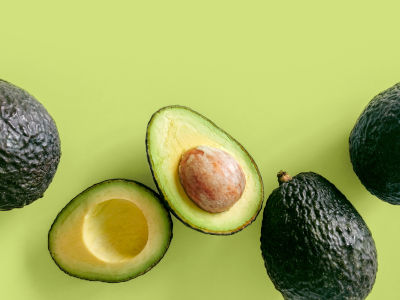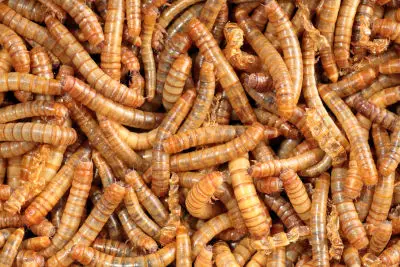Baby Anole Lizard (Diet, Facts, Care Sheet & Pictures)
If you are thinking of getting a Baby anole (click here to see why Anoles love this substrate) lizard, or considering breeding some Anoles and need an insight into their behaviour, diet, water requirements natural predators and more, you are in the right place.
What is a Baby Anole Lizard? Baby Anoles are the offspring of the Anole lizard. The popular Green Anole’s natural habitat is southern united states, they are poplar with beginner lizard keepers for their manageable temperament and good small size.
| Are these foods dangerous for your Beardie? | |
| Avacado? Click here to learn, from this guide, if this food is dangerous |  |
| Superworms? Click here to learn, from this guide, if this food is dangerous |  |
Now you understand what the baby Anole is, now let us dig deeper and look into their Diet, natural predators, water requirements, supplements and more.
This baby anole looks freshly hatched. I think I’ll call her Penny. pic.twitter.com/9LgZKD2Lni
— Mary Landers (@MaryLandersSMN) August 26, 2018
Baby Anole Diet
You can expect the baby anole to be very active and hungry as soon as they are hatched and begin their life. They will want a big feast as soon as they are hatched. Think about it from their perspective, wouldn’t you be hungry after waiting around inside an egg for up to 45 days?
The food that they consume is similar to their mother. However, it is more of a scaled down version. To give you an idea of exactly what I mean, they cannot eat full-size crickets.
When they’re babies what they tend to eat are small crickets. They are known as “pinhead crickets”. The reason for this name, as you can probably guess, is because they are really small. They are roughly about the size of a pinhead, hence the reason they are called this.
A general rule of thumb for any lizard, when it comes to the size of food, never give them anything that is longer than the distance between each of their eyes, are you with me? This is a good indication to avoid any choking.
Apart from these pinhead crickets (also known as baby crickets), they can also have fruit flies and springtails.
Water Requirements for Baby Anoles
When it comes to water you have to be careful to make sure that the baby lizard (how are they carried? click here) is consuming enough. Apart from other predators in the enclosure, dehydration is the next big killer. It is a big factor for their survival and is also quite a common issue while trying to keep them alive.
To make sure that they actually consume water correctly you can not place the water in a standard water dish. Instead this needs to be provided in droplets. This is so that they can digest the water and take it correctly. This may be in the form of water droplets that are falling from leaves or live plants in the enclosure.
How to deal with baby Anoles that are not drinking
You may find that, even if you are providing droplets, your baby Anole may not be drinking. Its important that you check that they are actually consuming the water. Because if they are not, you need to think of other ways of making sure that they do drink and avoid dehydration.
Let me share a clever way of making sure that they consume enough water, if you find that the standard droplets is not working. Identify the baby lizard that is not consuming the water first. Get a pipette or something similar, fill it with water, and directly drop the water droplet onto the face of your baby lizard. In particular on its snout.
This may seem a bit weird in the first instance, but what will happen is that the water will be licked off by the Anole and it will start to consume the water. To make sure that this happens on a continual basis you need to repeat this a few times a day.
Keep monitoring them to make sure that they are consuming enough water. Keep doing this until you start to notice that they are consuming water more and more regularly. The goal is to get them to start to consume water from the droplets in other areas of the tank and become less reliant on you.
Baby green anole on a pecan tree leaf Sun. aft., SE GA. #anole #greenanole #lizard #lizards #reptile #NaturePhotography #wildlifephotography pic.twitter.com/IuPthz2JOV
— eddieledbetter (@eddieledbetter) September 4, 2017
Supplements
When it comes to vitamins and calcium supplementation, like any other lizard, they will need this to keep them growing happy and healthy. It is a good idea to buy supplementation from your local pet store.
Make sure you read the instructions and gently dust or brush the supplement on to the insects before you give them to your lizard. This will mean that they will indirectly eat their supplements as they have their normal diet.
Housing
Once the baby anole (could its mother eat it? click here) is born you need to make sure that you provide enough leafy cover in their enclosure , because they’re easily stressed out if they do not have a place to hide.
As discussed earlier once they are born they are under threat from other Predators, including their own siblings or other adults in the enclosure. So they need places to hide and to relax to improve their chances of survival.
If you are using incubation facilities to grow these babies keep them separate. One thing that you will find is as soon as they are born they will immediately want to fight their siblings. So you need to keep an eye on them to keep them safe.
Heating and lighting requirements
One thing you will notice is that the baby Anole can change their body temperature at a rapid rate. As discussed earlier they can get dehydrated very easily, so it’s important that you maintain the perfect temperature at all times.
For at least 12 hours out of each day you need to provide a consistent temperature up to 80 degrees Fahrenheit to keep them happy. Another good tip, when you get your enclosure, is to have it indirectly positioned to some natural light for at least three or 4 hours out of the day. This is so they can also have natural lighting.
But how are the baby Anoles bred?
For your baby Anole to be successfully bred there are a number of factors that need to be met one of those is the housing. We have discussed housing briefly in an earlier section, but this is more focused on exactly what is needed when they are breeding.
Housing for Breeding
Ideally you will need a 20 gallon tank to keep the animals happy. However, it can’t just be your normal run of the mill 20 gallon tank, it needs to be quiet tall.
In particular, double the height of a usual 20 gallon tank. This is mainly to accommodate the male Anole, so it can establish its territory. Apart from this it’s also to create a level where you can place live or artificial plants.
The reason you need this higher level is so that you can spray and mist these plants on a regular basis, so that water droplets will be provided to the Anoles to make the environment perfect of breading.
The Male Anole’s Needs
To keep the male happy you need to make sure that you only have one male in your terrarium. This is because, if you have more than one male, they’re quite territorial, and they will fight.
You need to understand that one male can easily accommodate 3 to 4 females. So there’s no need to worry about a lack of males being in the enclosure. Once the male is ready to breed it will start doing a kind of “head bobbing” movement and display its bright colours, which will inadvertently activate ovulation in the females for mating.
The Female Anole
With regards to the females, as discussed earlier the male will establish it’s territory in the tall terrarium you provide. Once the female enters the male’s territory, the male will appear to be quite aggressive.
Do not be alarmed by this, this is nature. The male will appear to bite the female, but it is more of a nip actually. This is to secure the female into the correct position for breeding. Once the breeding is over the female is allowed out of the territory.
She is unlikely to be bred again. However, this is not a concern because once they are bread once, they will have enough eggs to lay for the entire summer and potentially for the next summer as well.
Baby Anole Predators
After the Anole lizard eggs are laid you can expect the baby to hatch out up to 45 days after. One thing that you have to take into consideration is, whenever they do Hatch they are up they are at a constant threat from other predators (more on this later).
These threats can come from all angles even within their own enclosure in captivity. For example they could be eaten by their own siblings or another adult lizard within the same enclosure believe it or not.
One thing to consider before you even start considering breeding or taking on a baby and I’ll lizard for green anole lizards in particular you may find depending on where you are in the world that you may need a licence or permit to actually own and keep one for example in the United States in particular Georgia you will find that you’ll probably need a permit to keep one of these animals
Related Questions:
So how many Baby eggs can you expect from a female anole? After the female has mated, she will start to lay eggs every 10 days from the summer period up until autumn. In total you can expect up to a dozen eggs to be laid. Once the eggs are laid it can take up to 6 weeks for them to hatch out.
What do baby animals look like when they hatched? The baby anoles are pretty much a miniature version of their parents. However they have a distinguishable brownish colour. Usually their size proportion is quite different, having relatively big heads in comparison to the rest of their body.